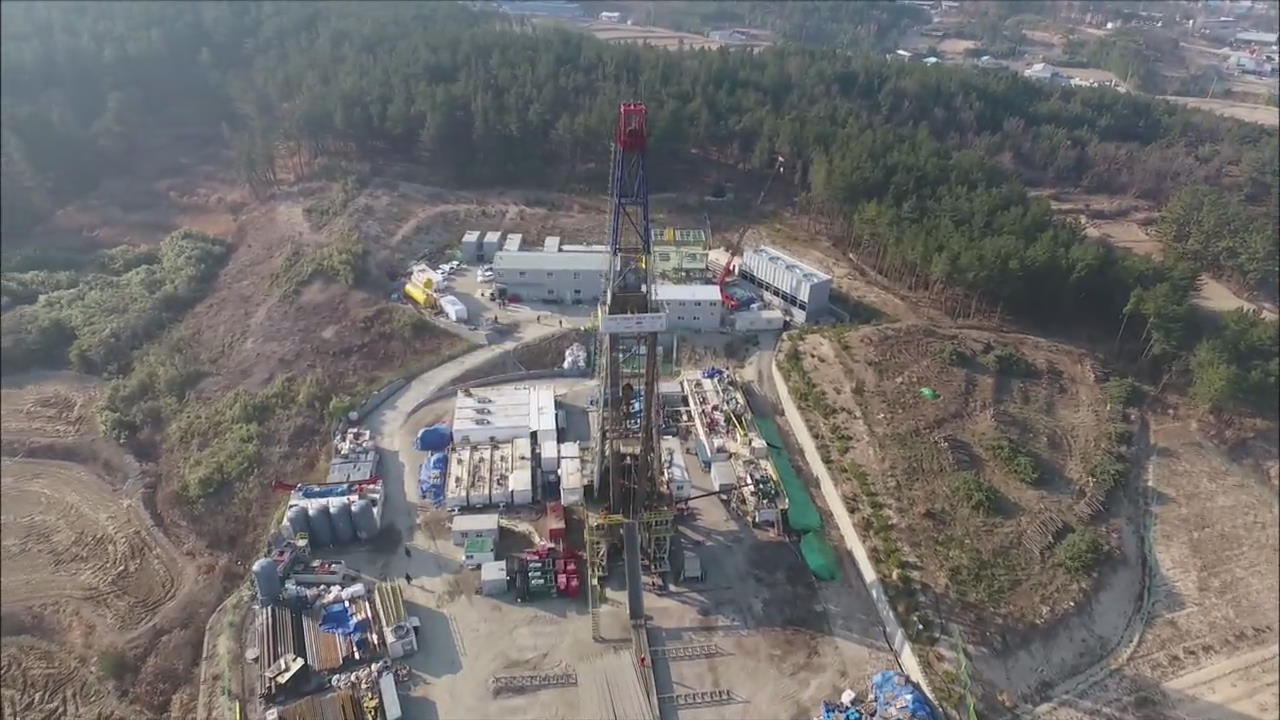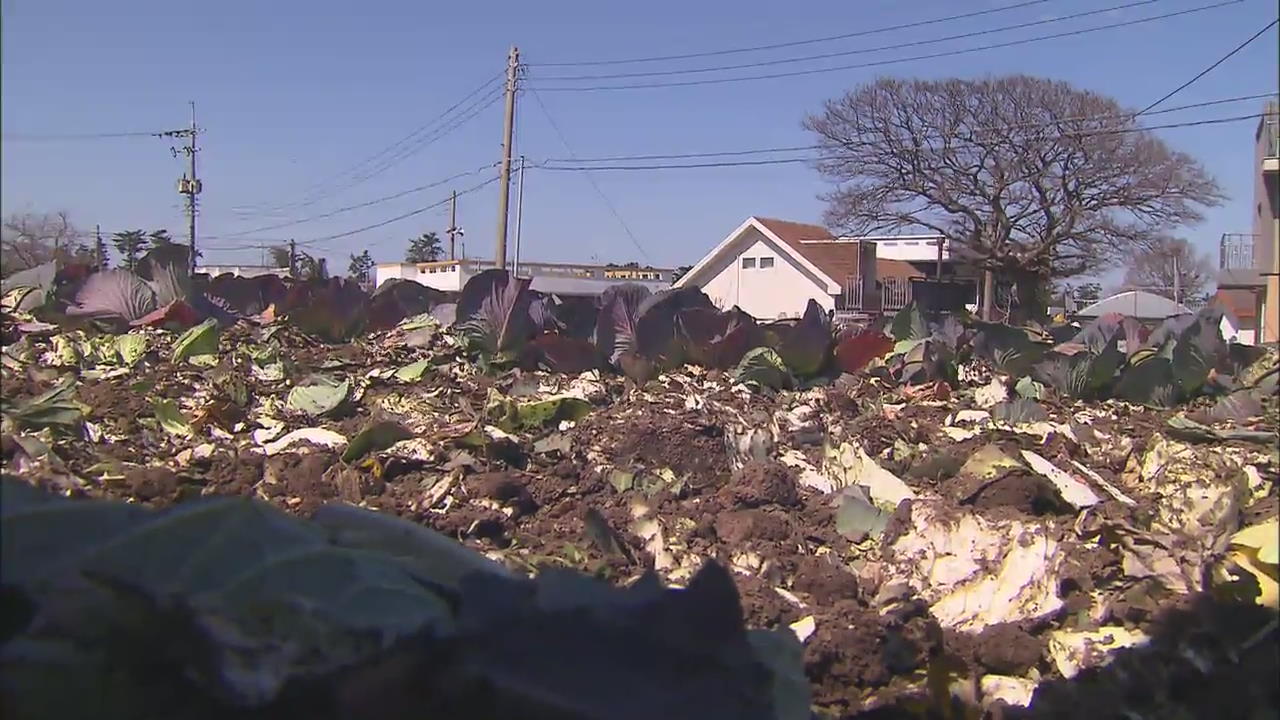State Compensation Dispute
입력 2019.03.25 (15:03)
수정 2019.03.25 (15:31)
읽어주기 기능은 크롬기반의
브라우저에서만 사용하실 수 있습니다.
[Anchor Lead]
Following government findings that the devastating 2017 earthquake in Pohang was triggered by a geothermal power plant, the issue of state compensation has come into spotlight. Some citizens in Pohang have already launched legal action, demanding compensation from the state and the power plant. Let's take a look at some key issues expected to be disputed in the trial.
[Pkg]
Already over a thousand citizens in Pohang have lodged a compensation lawsuit against the state over damages caused by the 2017 earthquake. This is because the geothermal power plant which is found to have caused the tremor was built as part of a state-led project. But disputing the case in court is not as simple as it may sound. Under domestic law, state compensation is sought when losses are incurred after civil servants intentionally or mistakenly violated the law while executing public duties. The key here is determining the nature of the violation: Was it accidental or intentional? The biggest contention would be whether the state pushed for the project and did not take appropriate measures while knowing the risks of earthquakes. The citizens taking legal action argue the state knew about this risk noting the power plant is located in an area at high risk of quakes and that several smaller tremors had occurred prior to 2017. Speculations further escalated following a KBS report that a large number of officials who were part of similarly problematic power plant constructions overseas also took part in the Pohang project. Another sticking point is whether artificial earthquakes can be seen as environmental pollution as argued by the plaintiffs. If this recognition is valid, the state's liability of reparation is more likely to be acknowledged, in accordance with a separate law.
[Soundbite] Jeong Jae-ho(Advisory attorney for KBS) : "Generally, plaintiff must prove all the necessary requirements to build a case. If it is recognized as an environmental pollution case, the burden of presenting proof is mitigated, and the compensation request is acknowledged even if it was due to negligence."
The expected amount of compensation also varies greatly, depending on who you ask. The government believes the earthquake inflicted some 85 billion won in property damage while the Bank of Korea estimates around 300 billion won. The litigation group believes with the growing number of plaintiffs, the amount of compensation could reach several trillion won.
Following government findings that the devastating 2017 earthquake in Pohang was triggered by a geothermal power plant, the issue of state compensation has come into spotlight. Some citizens in Pohang have already launched legal action, demanding compensation from the state and the power plant. Let's take a look at some key issues expected to be disputed in the trial.
[Pkg]
Already over a thousand citizens in Pohang have lodged a compensation lawsuit against the state over damages caused by the 2017 earthquake. This is because the geothermal power plant which is found to have caused the tremor was built as part of a state-led project. But disputing the case in court is not as simple as it may sound. Under domestic law, state compensation is sought when losses are incurred after civil servants intentionally or mistakenly violated the law while executing public duties. The key here is determining the nature of the violation: Was it accidental or intentional? The biggest contention would be whether the state pushed for the project and did not take appropriate measures while knowing the risks of earthquakes. The citizens taking legal action argue the state knew about this risk noting the power plant is located in an area at high risk of quakes and that several smaller tremors had occurred prior to 2017. Speculations further escalated following a KBS report that a large number of officials who were part of similarly problematic power plant constructions overseas also took part in the Pohang project. Another sticking point is whether artificial earthquakes can be seen as environmental pollution as argued by the plaintiffs. If this recognition is valid, the state's liability of reparation is more likely to be acknowledged, in accordance with a separate law.
[Soundbite] Jeong Jae-ho(Advisory attorney for KBS) : "Generally, plaintiff must prove all the necessary requirements to build a case. If it is recognized as an environmental pollution case, the burden of presenting proof is mitigated, and the compensation request is acknowledged even if it was due to negligence."
The expected amount of compensation also varies greatly, depending on who you ask. The government believes the earthquake inflicted some 85 billion won in property damage while the Bank of Korea estimates around 300 billion won. The litigation group believes with the growing number of plaintiffs, the amount of compensation could reach several trillion won.
■ 제보하기
▷ 카카오톡 : 'KBS제보' 검색, 채널 추가
▷ 전화 : 02-781-1234, 4444
▷ 이메일 : kbs1234@kbs.co.kr
▷ 유튜브, 네이버, 카카오에서도 KBS뉴스를 구독해주세요!
- State Compensation Dispute
-
- 입력 2019-03-25 15:21:26
- 수정2019-03-25 15:31:53

[Anchor Lead]
Following government findings that the devastating 2017 earthquake in Pohang was triggered by a geothermal power plant, the issue of state compensation has come into spotlight. Some citizens in Pohang have already launched legal action, demanding compensation from the state and the power plant. Let's take a look at some key issues expected to be disputed in the trial.
[Pkg]
Already over a thousand citizens in Pohang have lodged a compensation lawsuit against the state over damages caused by the 2017 earthquake. This is because the geothermal power plant which is found to have caused the tremor was built as part of a state-led project. But disputing the case in court is not as simple as it may sound. Under domestic law, state compensation is sought when losses are incurred after civil servants intentionally or mistakenly violated the law while executing public duties. The key here is determining the nature of the violation: Was it accidental or intentional? The biggest contention would be whether the state pushed for the project and did not take appropriate measures while knowing the risks of earthquakes. The citizens taking legal action argue the state knew about this risk noting the power plant is located in an area at high risk of quakes and that several smaller tremors had occurred prior to 2017. Speculations further escalated following a KBS report that a large number of officials who were part of similarly problematic power plant constructions overseas also took part in the Pohang project. Another sticking point is whether artificial earthquakes can be seen as environmental pollution as argued by the plaintiffs. If this recognition is valid, the state's liability of reparation is more likely to be acknowledged, in accordance with a separate law.
[Soundbite] Jeong Jae-ho(Advisory attorney for KBS) : "Generally, plaintiff must prove all the necessary requirements to build a case. If it is recognized as an environmental pollution case, the burden of presenting proof is mitigated, and the compensation request is acknowledged even if it was due to negligence."
The expected amount of compensation also varies greatly, depending on who you ask. The government believes the earthquake inflicted some 85 billion won in property damage while the Bank of Korea estimates around 300 billion won. The litigation group believes with the growing number of plaintiffs, the amount of compensation could reach several trillion won.
Following government findings that the devastating 2017 earthquake in Pohang was triggered by a geothermal power plant, the issue of state compensation has come into spotlight. Some citizens in Pohang have already launched legal action, demanding compensation from the state and the power plant. Let's take a look at some key issues expected to be disputed in the trial.
[Pkg]
Already over a thousand citizens in Pohang have lodged a compensation lawsuit against the state over damages caused by the 2017 earthquake. This is because the geothermal power plant which is found to have caused the tremor was built as part of a state-led project. But disputing the case in court is not as simple as it may sound. Under domestic law, state compensation is sought when losses are incurred after civil servants intentionally or mistakenly violated the law while executing public duties. The key here is determining the nature of the violation: Was it accidental or intentional? The biggest contention would be whether the state pushed for the project and did not take appropriate measures while knowing the risks of earthquakes. The citizens taking legal action argue the state knew about this risk noting the power plant is located in an area at high risk of quakes and that several smaller tremors had occurred prior to 2017. Speculations further escalated following a KBS report that a large number of officials who were part of similarly problematic power plant constructions overseas also took part in the Pohang project. Another sticking point is whether artificial earthquakes can be seen as environmental pollution as argued by the plaintiffs. If this recognition is valid, the state's liability of reparation is more likely to be acknowledged, in accordance with a separate law.
[Soundbite] Jeong Jae-ho(Advisory attorney for KBS) : "Generally, plaintiff must prove all the necessary requirements to build a case. If it is recognized as an environmental pollution case, the burden of presenting proof is mitigated, and the compensation request is acknowledged even if it was due to negligence."
The expected amount of compensation also varies greatly, depending on who you ask. The government believes the earthquake inflicted some 85 billion won in property damage while the Bank of Korea estimates around 300 billion won. The litigation group believes with the growing number of plaintiffs, the amount of compensation could reach several trillion won.
이 기사가 좋으셨다면
-
좋아요
0
-
응원해요
0
-
후속 원해요
0










![[headline]](https://news.kbs.co.kr/data/news/2019/03/25/4165116_10.jpg)




![[단독] 윤석열 정부, ‘대통령실 공사비 미지급’ 피소](/data/news/2025/06/30/20250630_8MRvHk.png)

이 기사에 대한 의견을 남겨주세요.